Jesmonite, a flexible substance crafted from a fusion of gypsum sourced from sedimentary rock and water-based acrylic resin, is gaining popularity among artists, eco-conscious enterprises, and DIY enthusiasts. This material emerged in the UK in 1984 and is credited to Peter Hawkins. Jesmonite is known for its durability, flame resistance, and impact resistance, is ideal for crafting objects of all sizes, readily accepting colored pigments and metal powders when mixed. Additionally, it is a preferred option over alternatives like fiberglass, plaster, polyester, or resin because of its safety, eco-friendliness, and user-friendliness.
Designer: Pepper Please Studio
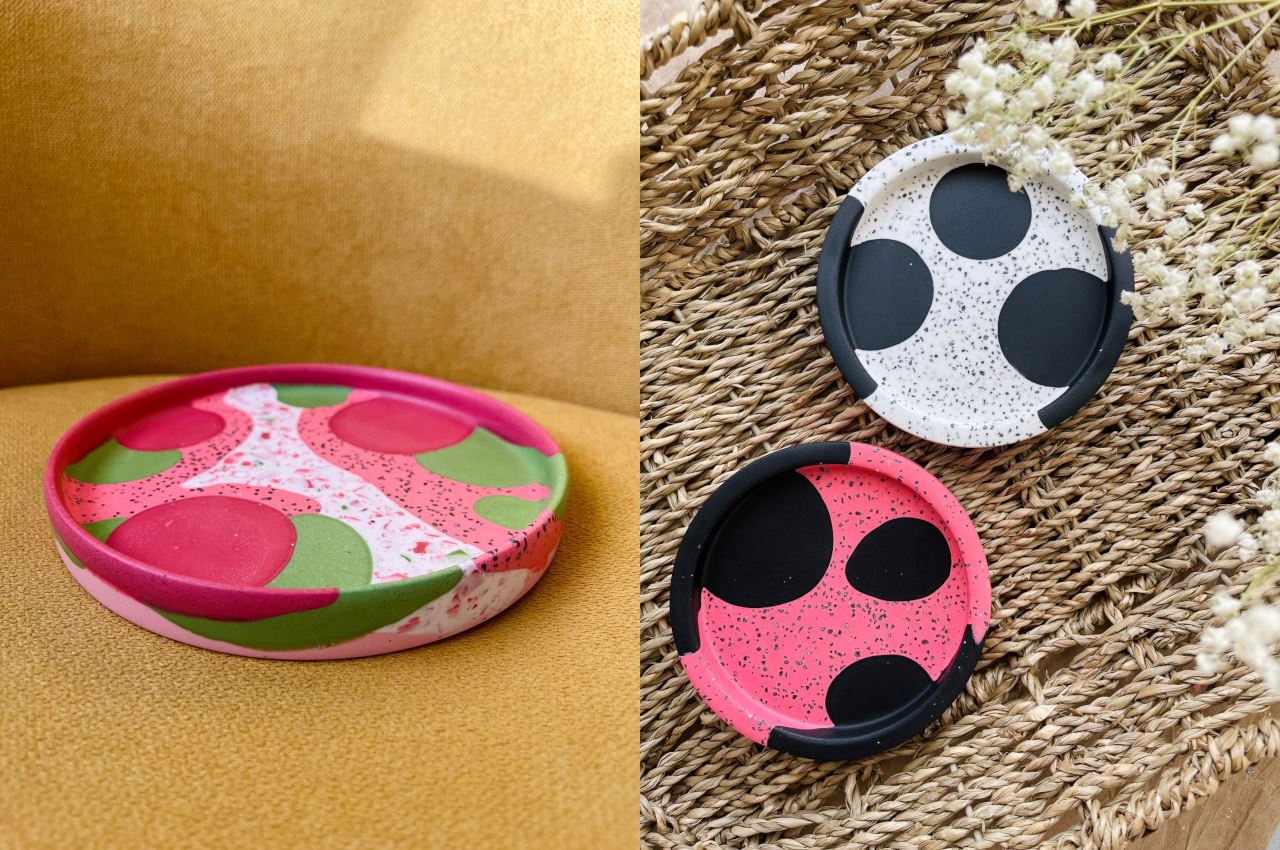
How is Jesmonite made?
Jesmonite, derived from the natural mineral Gypsum is ground into a fine powder and is then blended with a water-based resin. Resembling stone when fully cured, Jesmonite has a rapid setting time of as little as 30 minutes. However, it gradually cures over 24 hours.
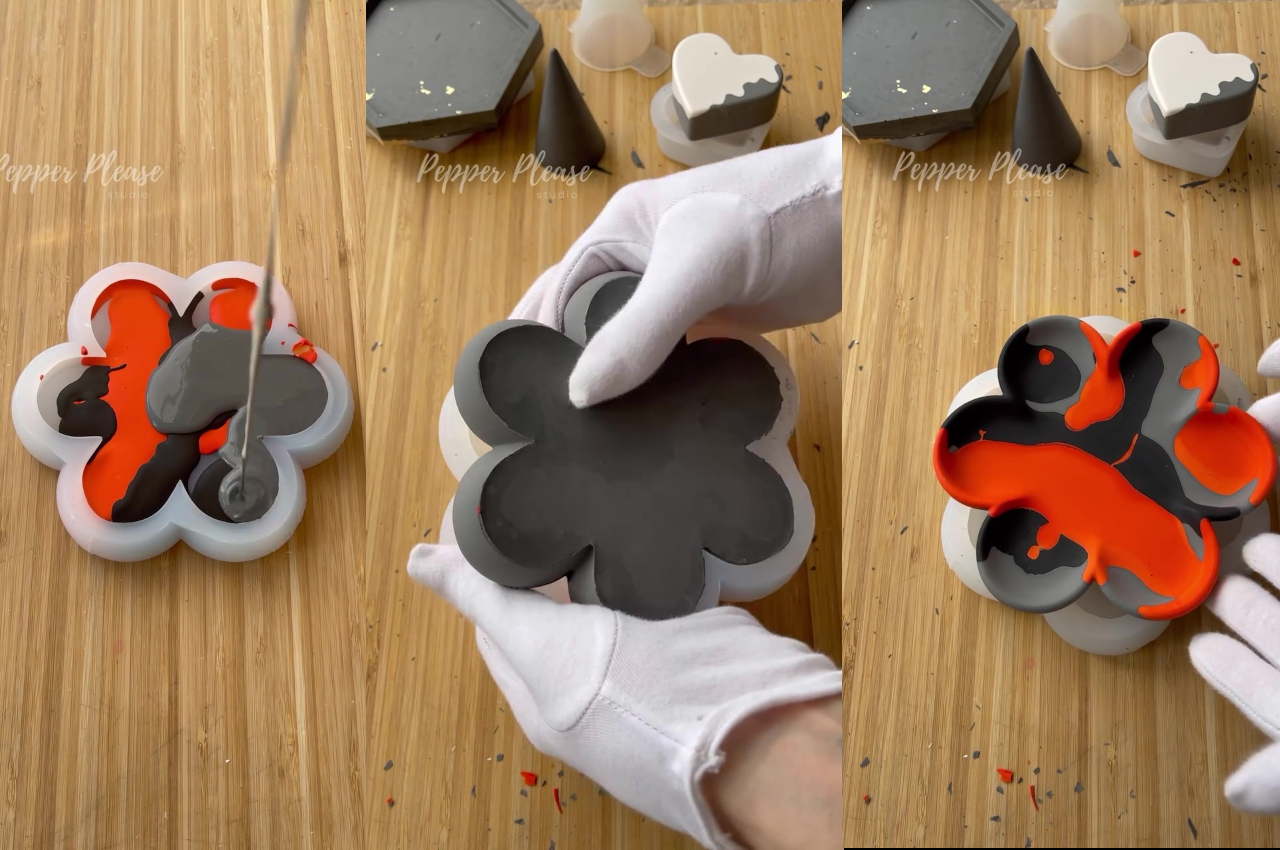
What are the benefits of using Jesmonite?
The top benefits of using jesmonite include:
• Versatile Material:
Jesmonite, a versatile material, can replicate any texture and can be pigmented to achieve any color. It is adaptable to various shapes and sizes, effortlessly mimicking the appearance and surface finish of numerous materials such as wood, stone, metal, and even leather.
• Flexible:
Jesmonite can be molded into various shapes and can be used to create both simple and complex designs.
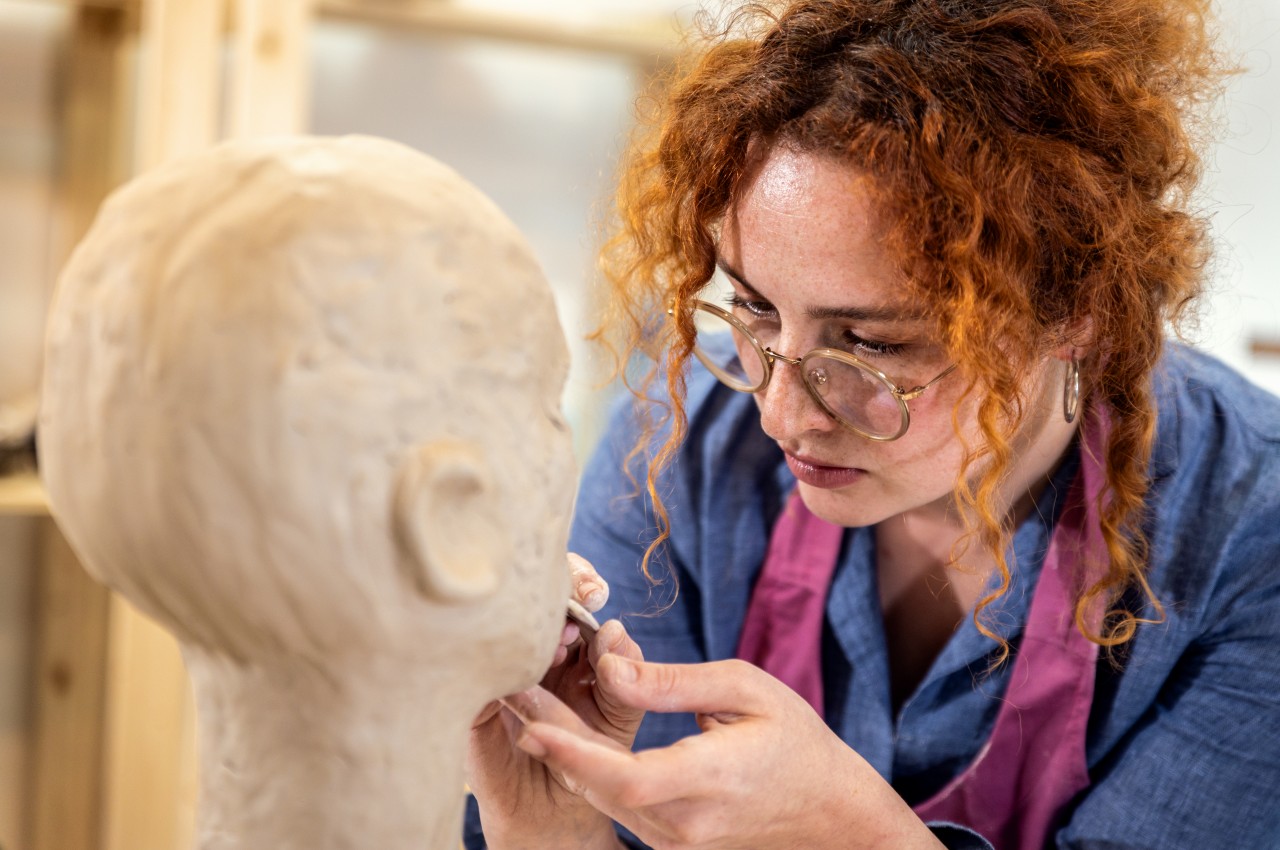
Female sculptor working in pottery studio workshop sculpting human head.
Image courtesy of: zoranzeremski
• Lightweight:
Although Jesmonite can give the appearance of stone, concrete, or metal it is light in weight which makes it user-friendly and easy to handle. Due to its lightweight nature, Jesmonite is favored in other fields where casting and molding are prevalent, particularly in architectural stone and plasterwork applications that demand reduced weight.
• Highly Durable:
Jesmonite is renowned for its durability, withstanding cracking, chipping, and damage while remaining waterproof when sealed. It also resists staining, making it suitable for both indoor and outdoor use, effortlessly handling everyday wear and tear.
• Multiple Finishing Options:
Jesmonite offers versatile finishing options, easily customizable from smooth and matte to rough and textured, making it ideal for crafting unique decor pieces. Unlike concrete and plaster, Jesmonite requires minimal effort to achieve desired finishes without the need for specialized tools or techniques.
• Eco-Friendly:
It is non-toxic, does not emit harmful VOCs, and can be combined with other recyclable materials, further helping to reduce environmental impact.
What are the applications of Jesmonite?
Jesmonite can be used for multiple purposes across various fields and is primarily employed in sculpting and crafting three-dimensional artworks, it also doubles as a suitable painting substrate when paired with other materials. Additionally, Jesmonite functions adeptly as a surface material in construction, offering an appealing alternative to resin-based options like polyester and fiberglass, and is utilized for casting and laminating tasks.
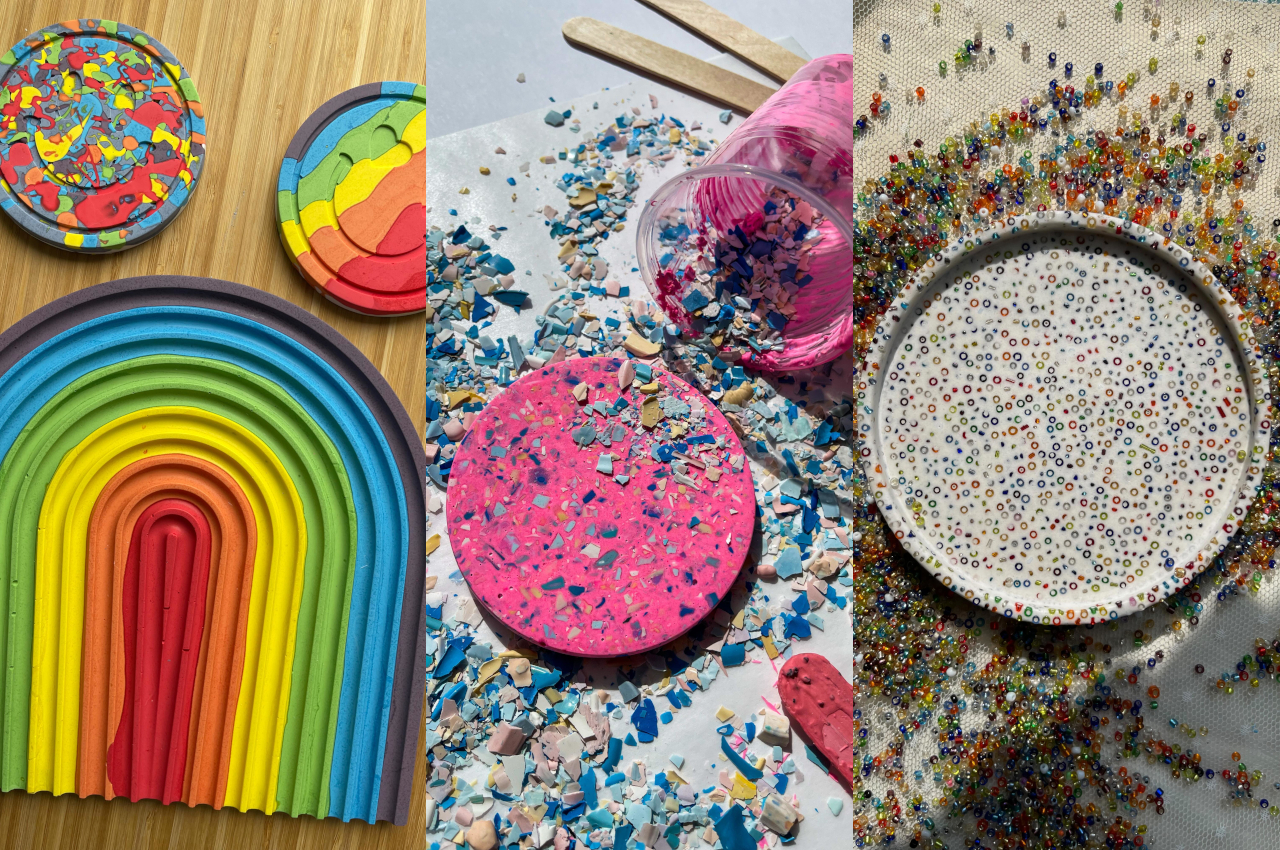
Designer: Pepper Please Studio
Note: Despite being low-hazard, with no need for harmful solvents during mixing and emitting no toxic fumes, caution is urged during mixing, requiring protective gear like rubber gloves, eye protection, and a dust mask in a well-ventilated area, while cleanup is easily done with water.
1. Furniture
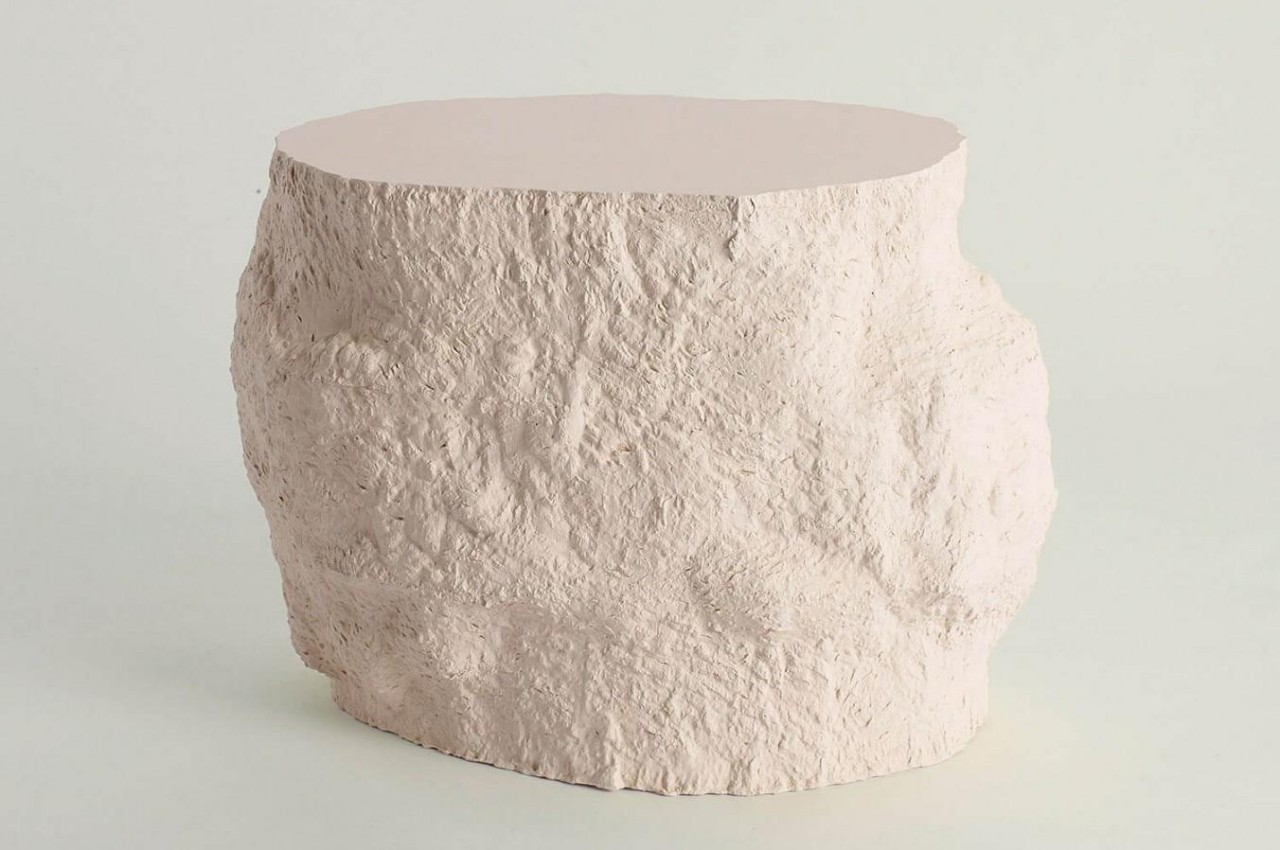
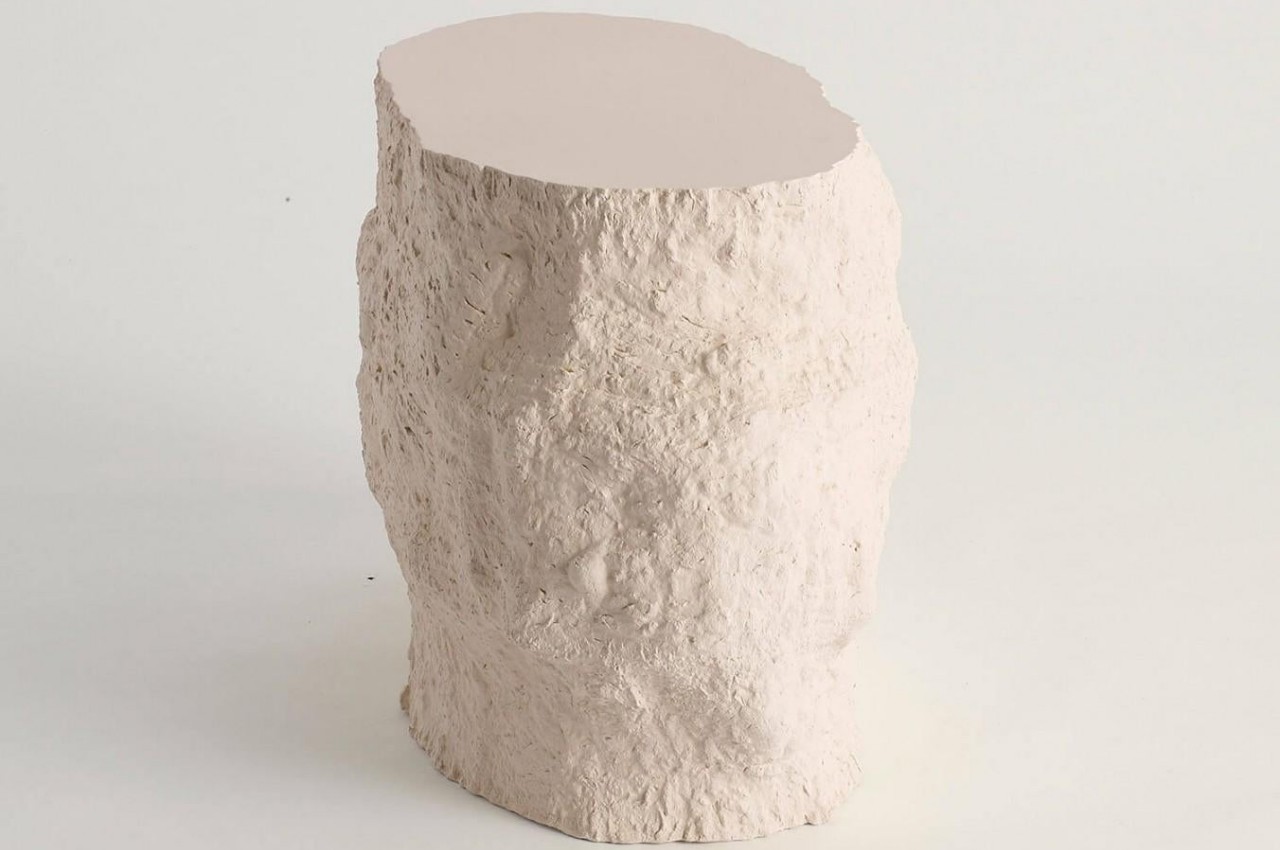
Designer: Malgorzata Bany
The Contemporary Jesmonite Side Table – Acacia, designed by Malgorzata Bany, draws inspiration from daily cleansing rituals and natural decay. The ACACIA collection embodies an intuitive construction method, carving the material to create foam molds, ensuring each piece is unique as each mold is used only once. Additionally, the textured body of the acacia vessel recalls Japanese Tsukubai, ceremonial washbasins symbolizing purification for visitors at holy places.
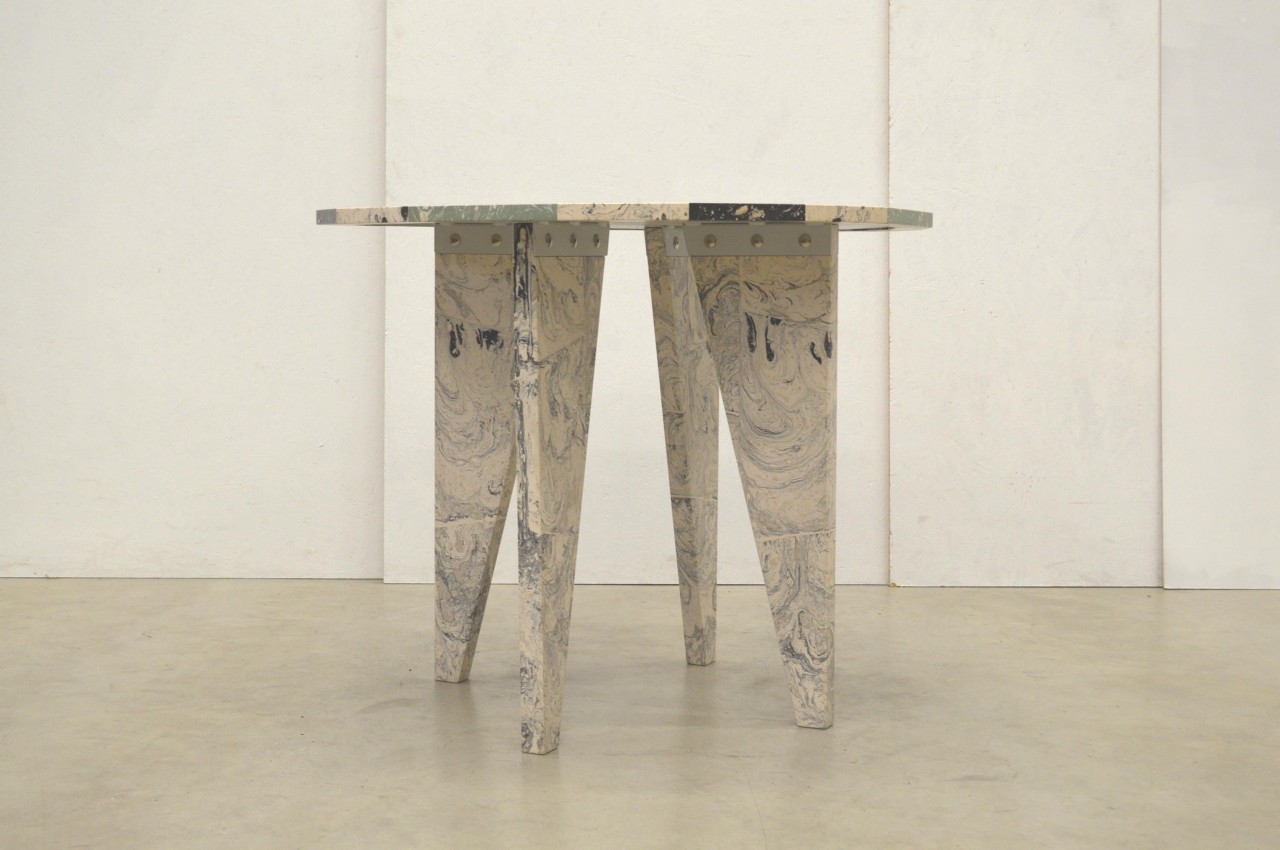
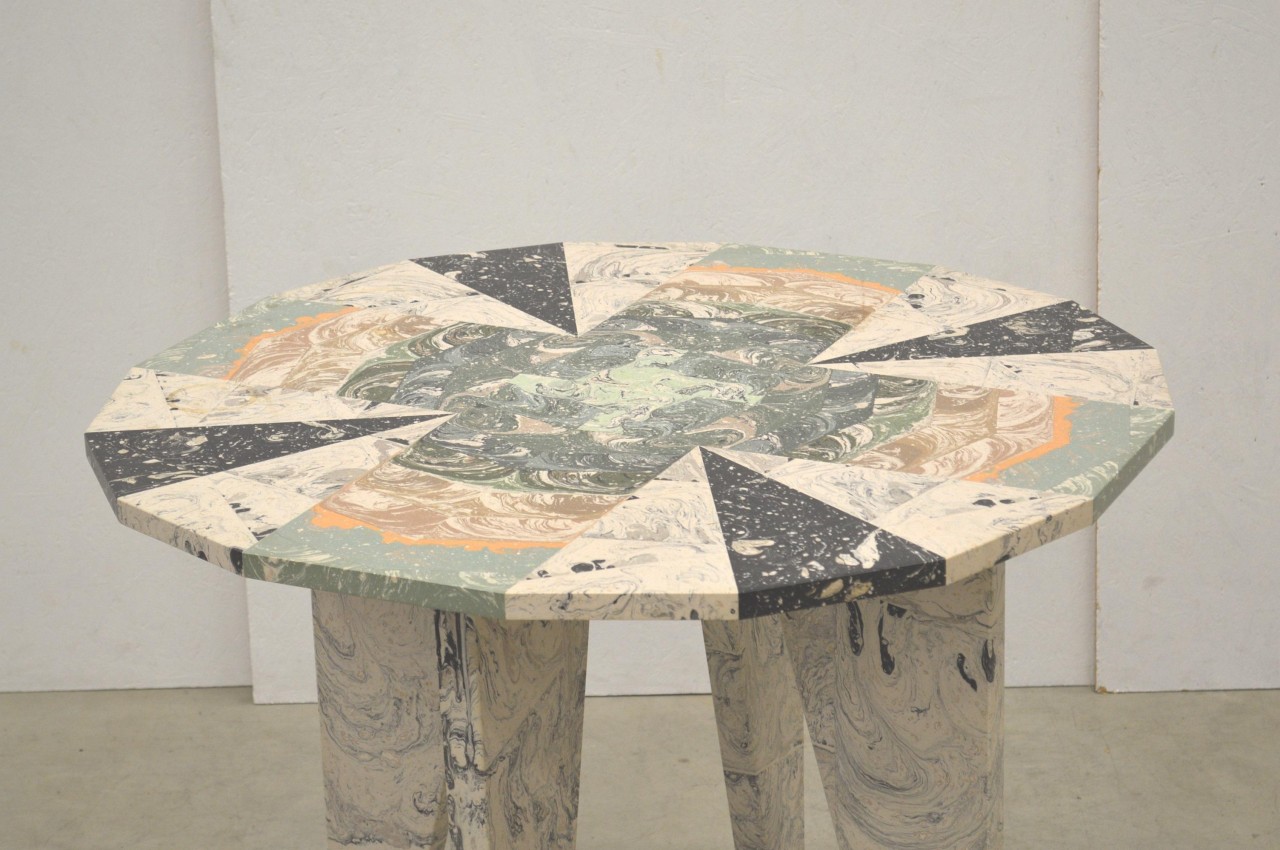
Designer: Hilda Hellström
Crafted by Swedish designer Hilda Hellström, this artistic table is composed of a blend of plaster and jesmonite, and serves various functions as a centerpiece, game, or dining table. Showcasing remarkable artistic vision and practicality, it stands as a true testament to elegance and sophistication.
2. Wall Planters
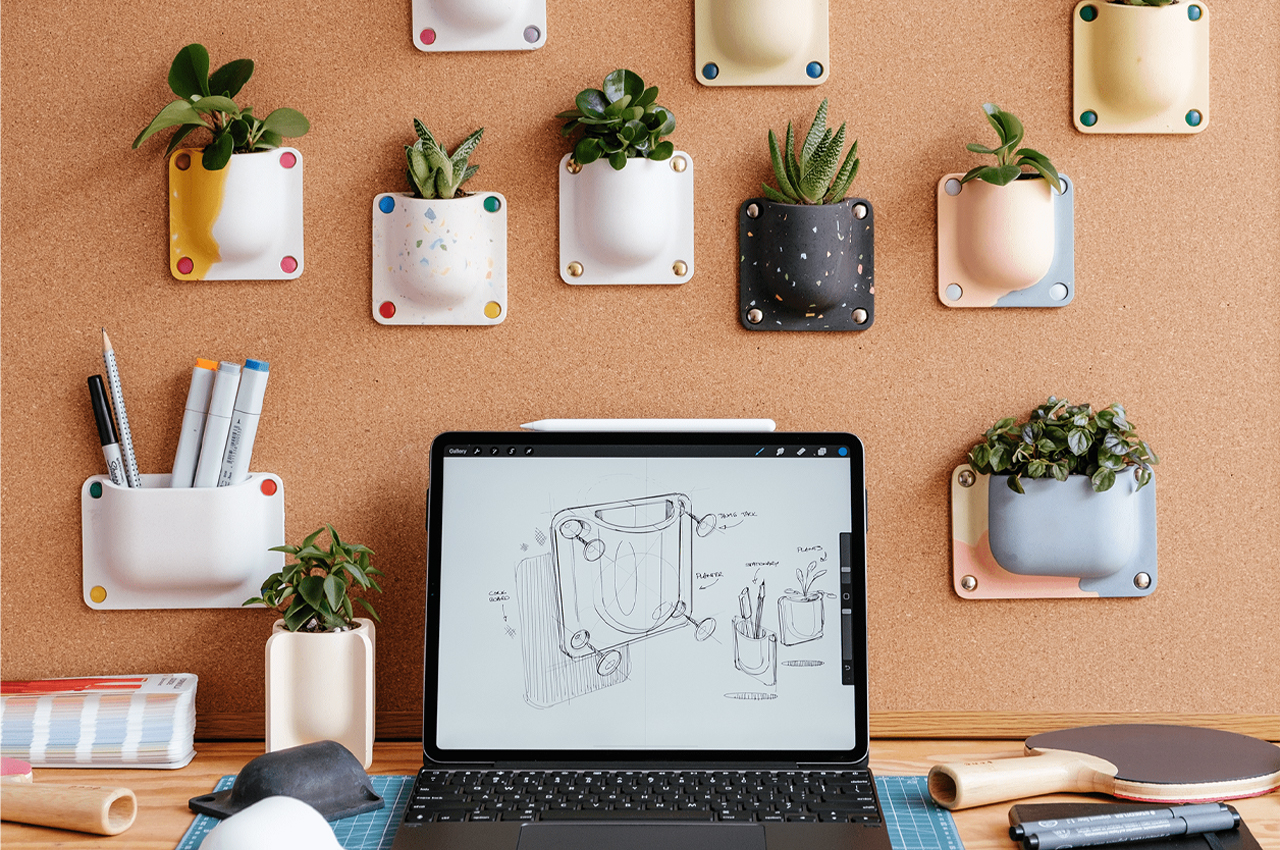
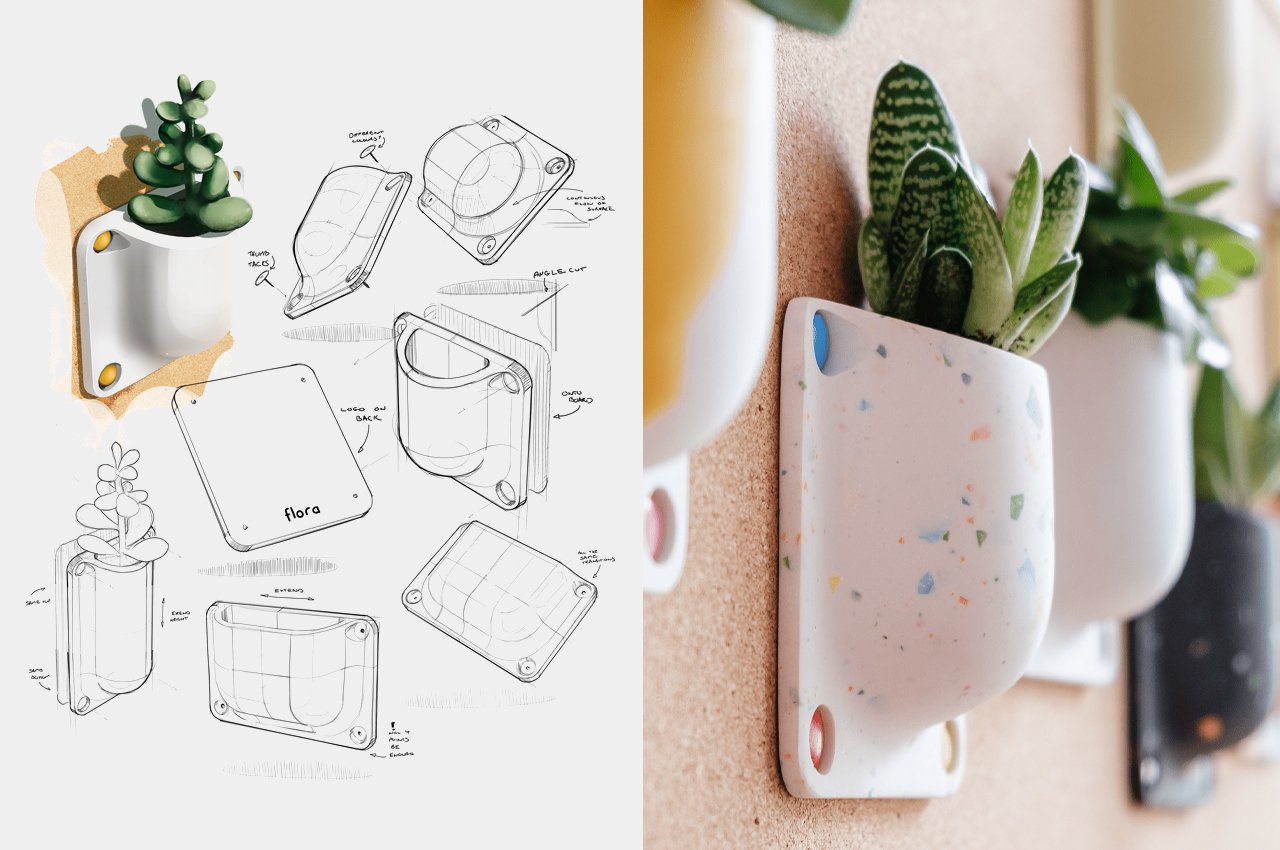
Designer: Préssec Design
Flora combines a cork pinboard with hanging jesmonite planters, offering a stylish WFH wall accessory. As hybrid and remote work is becoming a popular norm, innovative designs for home office accessories have emerged, including multifunctional solutions integrating storage and organization features. Sydney-based Préssec Design created Flora during the lockdown, initially experimenting with concrete casting before transitioning to jesmonite for seamless integration with the corkboard. Customizable with colorful thumbtacks, Flora maintains crisp edges through meticulous prototyping, using silicone molds for jesmonite casting.
3. Sculpture
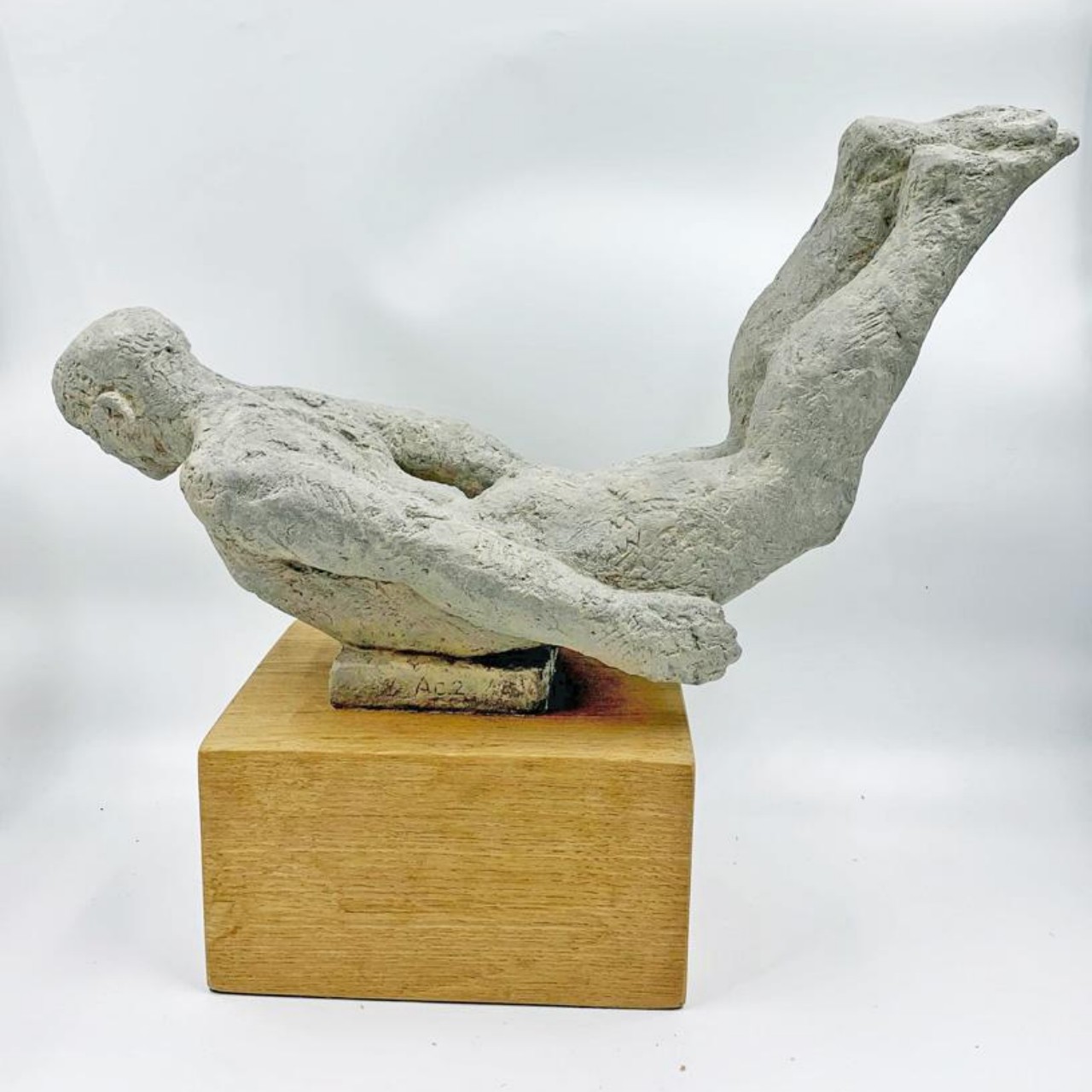
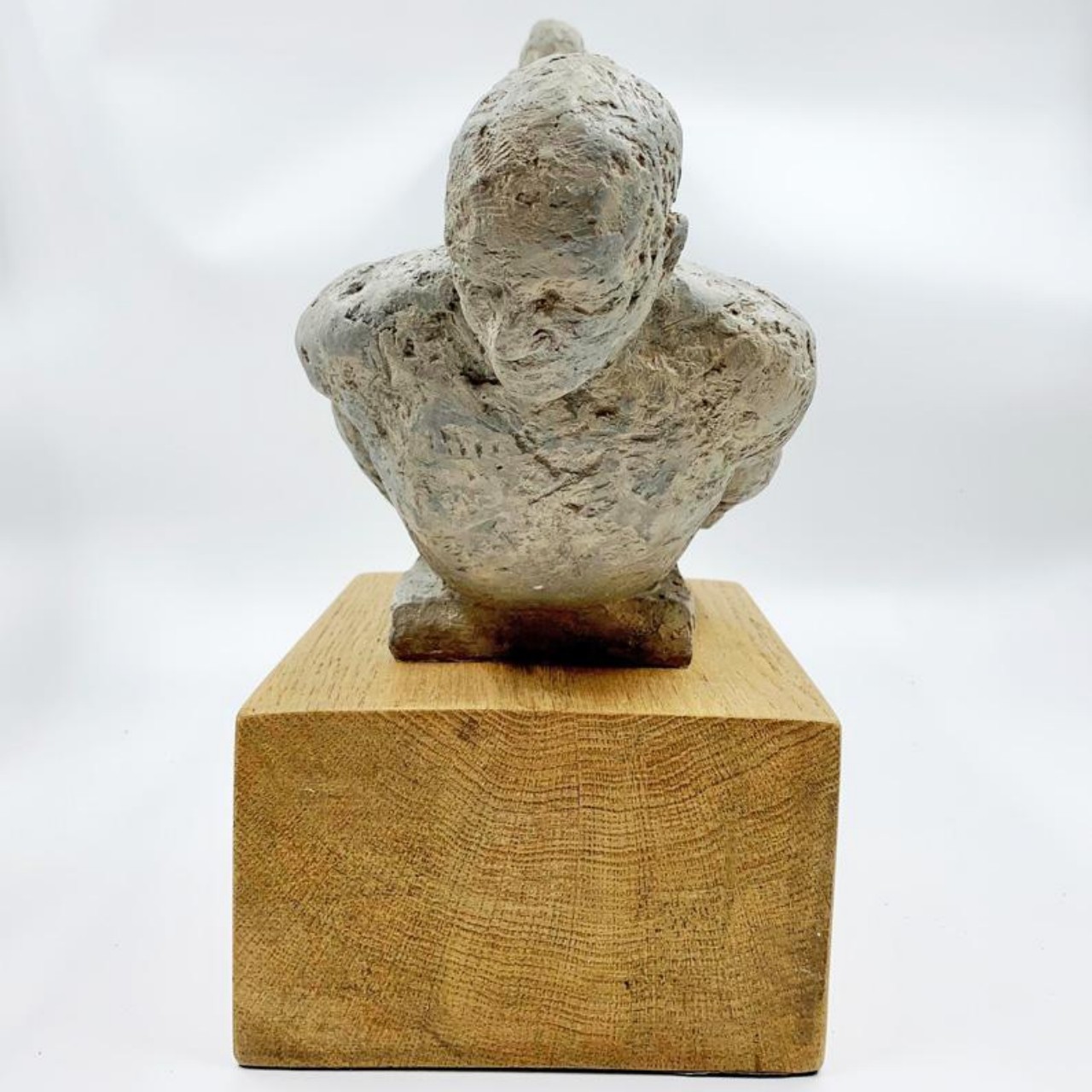
Designer: Manny Woodard
Manny Woodard’s sculptures, such as “The Flying Man,” embody contemporary figurative jesmonite sculpture. Woodard’s works prioritize the nuanced dynamics between individuals rather than superficially attractive subject matter, often portraying ordinary people regardless of conventional beauty standards, occasionally depicting individuals who are overweight.
4. Lamps
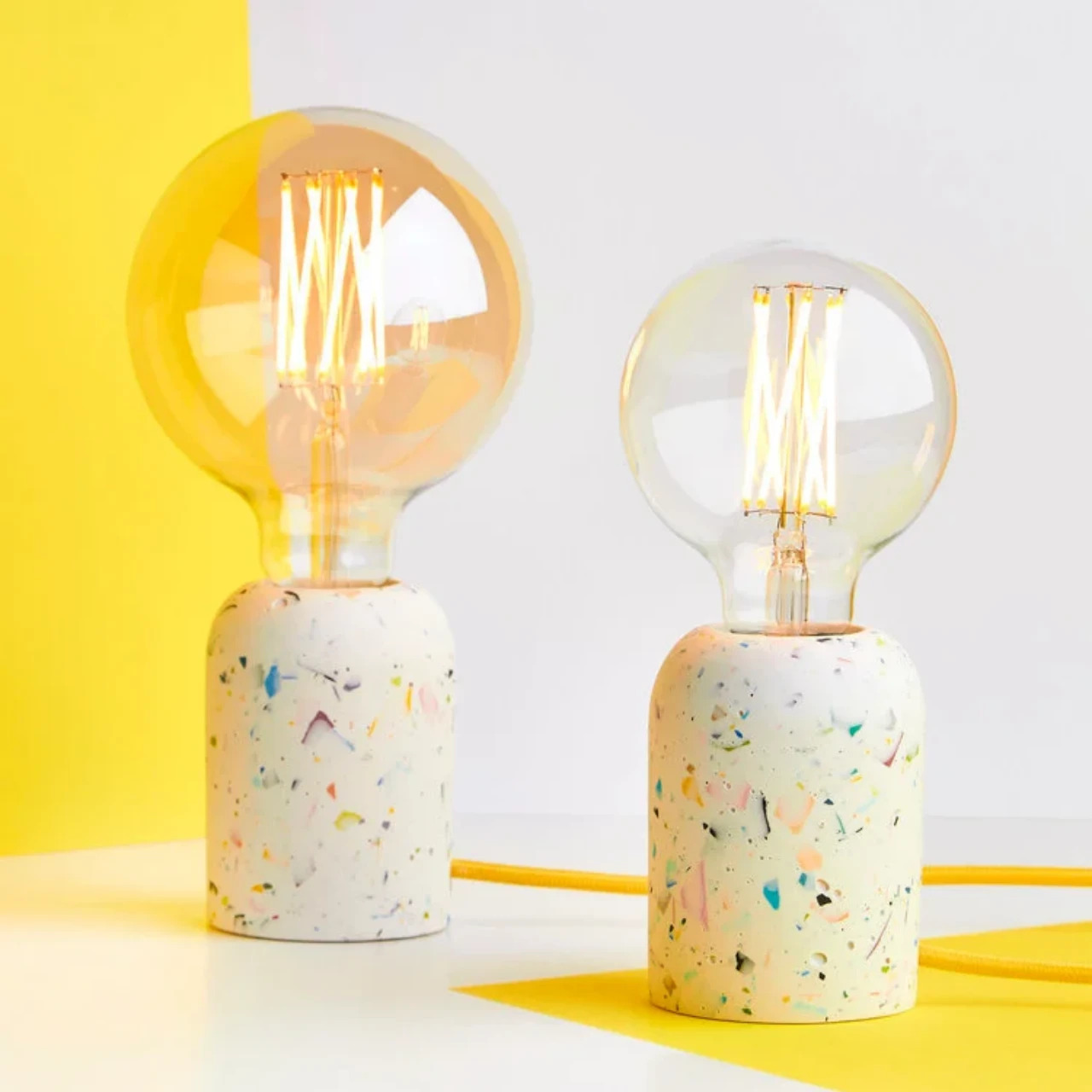
Designer: Emily Marlin
This lamp is meticulously crafted in Wales from jesmonite/terrazzo material and is perfect for adorning bedside tables or coffee tables next to any sofa. The lamp features a captivating blend of black, white, and copper fragments, exuding modern elegance. Complete with a 1.5m black fabric cable and switch, it offers both style and functionality to illuminate any space with sophistication.
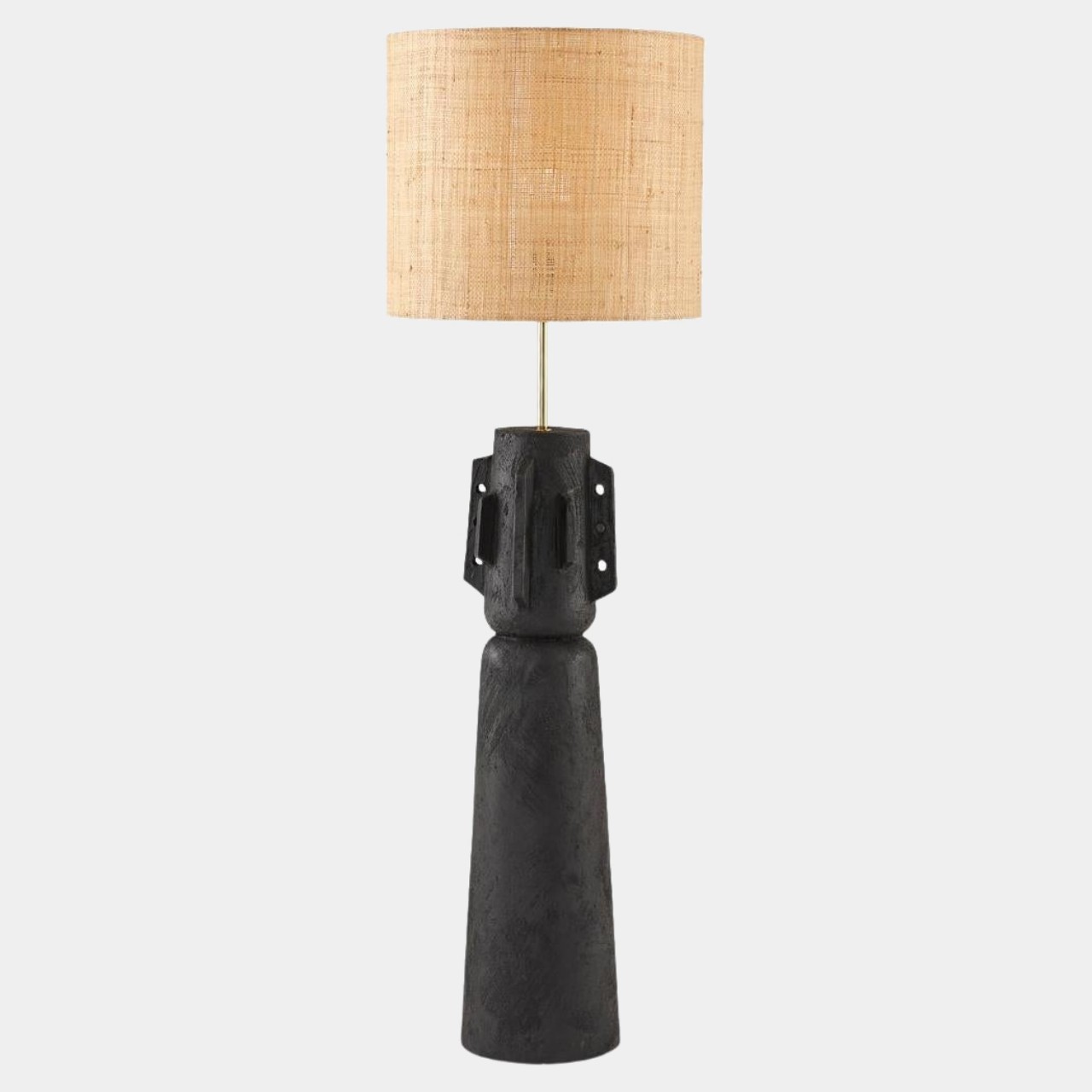
Designer: Egg Designs
The Totem lamp collection draws inspiration from Brutalist forms and incorporates hand-applied details for an individual artisanal flair. Crafted with a terracotta base finished in textured black Jesmonite plaster, each lamp is paired with a shaped raffia shade and polished brass stem, ensuring versatility to complement various interior styles.
5. Stone Carving
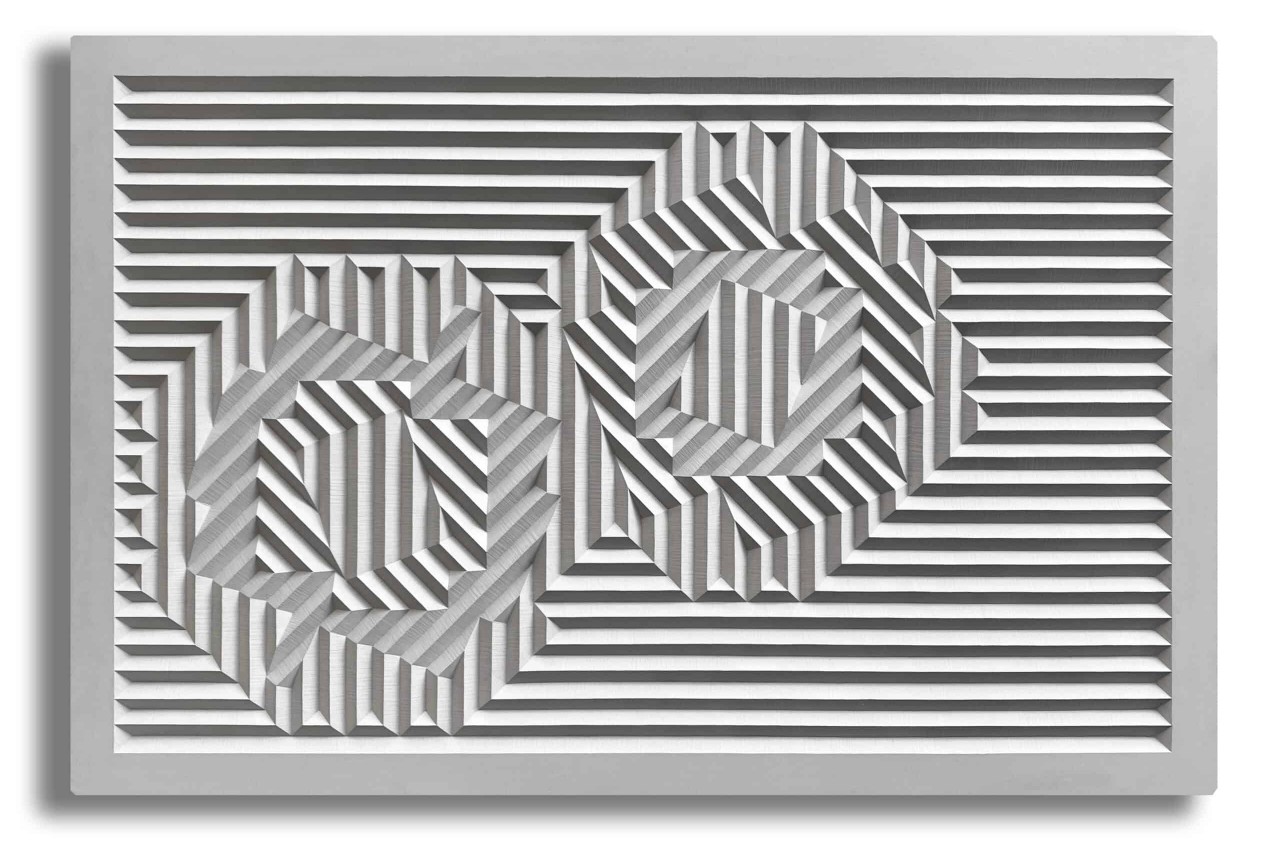
Samar, created by British stone carver Zoë Wilson, pays homage to friendship through its intricately precise multidirectional ridges, forming a captivating geometric pattern. Crafted from Jesmonite with a Portland finish, Samar derives its title from the Arabic word meaning ‘to sit together in conversation at sunset.’ The stone craftsmanship embodies a strikingly modern yet timeless aesthetic, effortlessly blending into various environments.
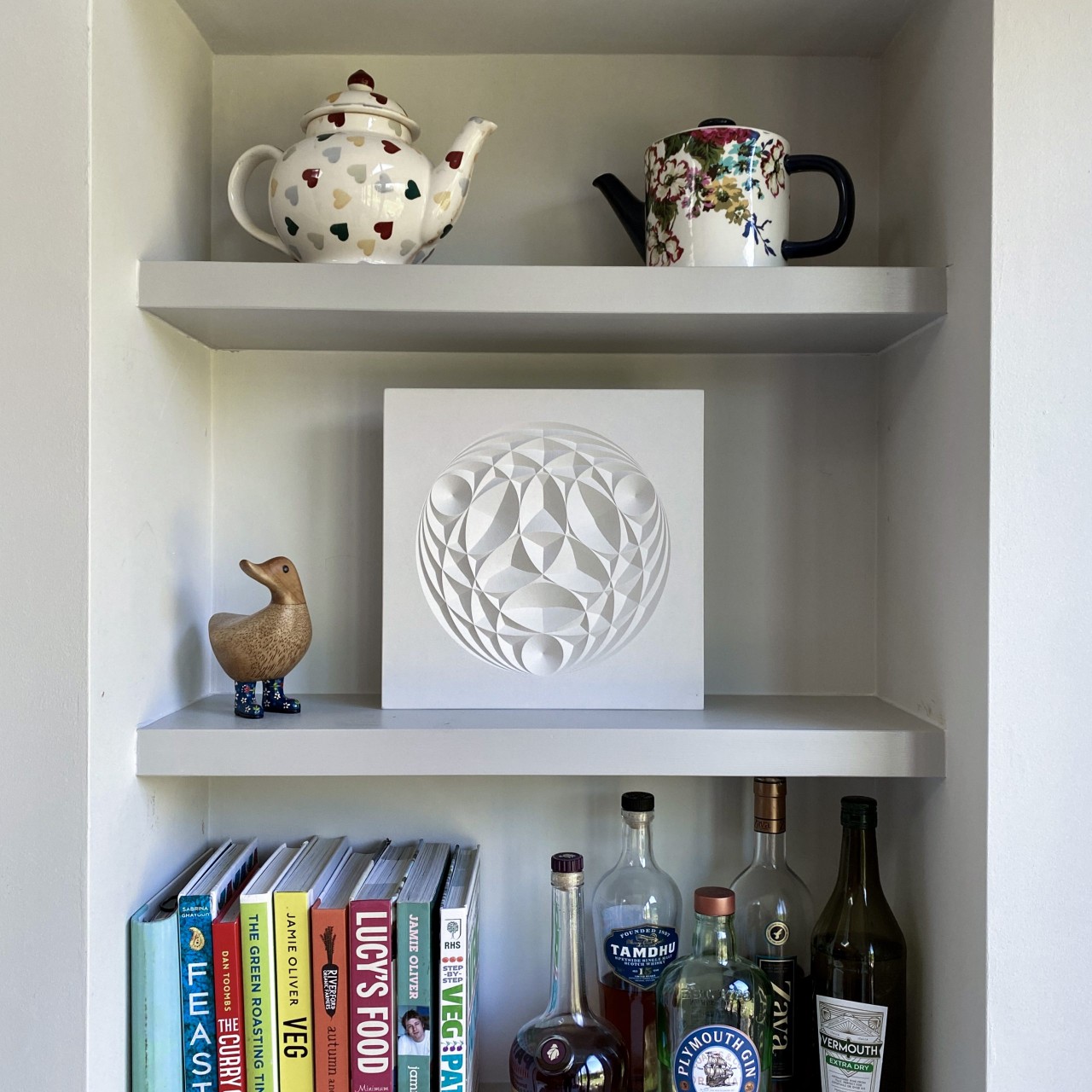
Designer: Zoe Wilson
In Zoë Wilson’s stone carving “Breath,” crafted from Jesmonite with a Portland finish, delicate overlapping circles form a hypnotic pattern, symbolizing the tranquillity she finds in the creative process.
6. Eco-Friendly Products
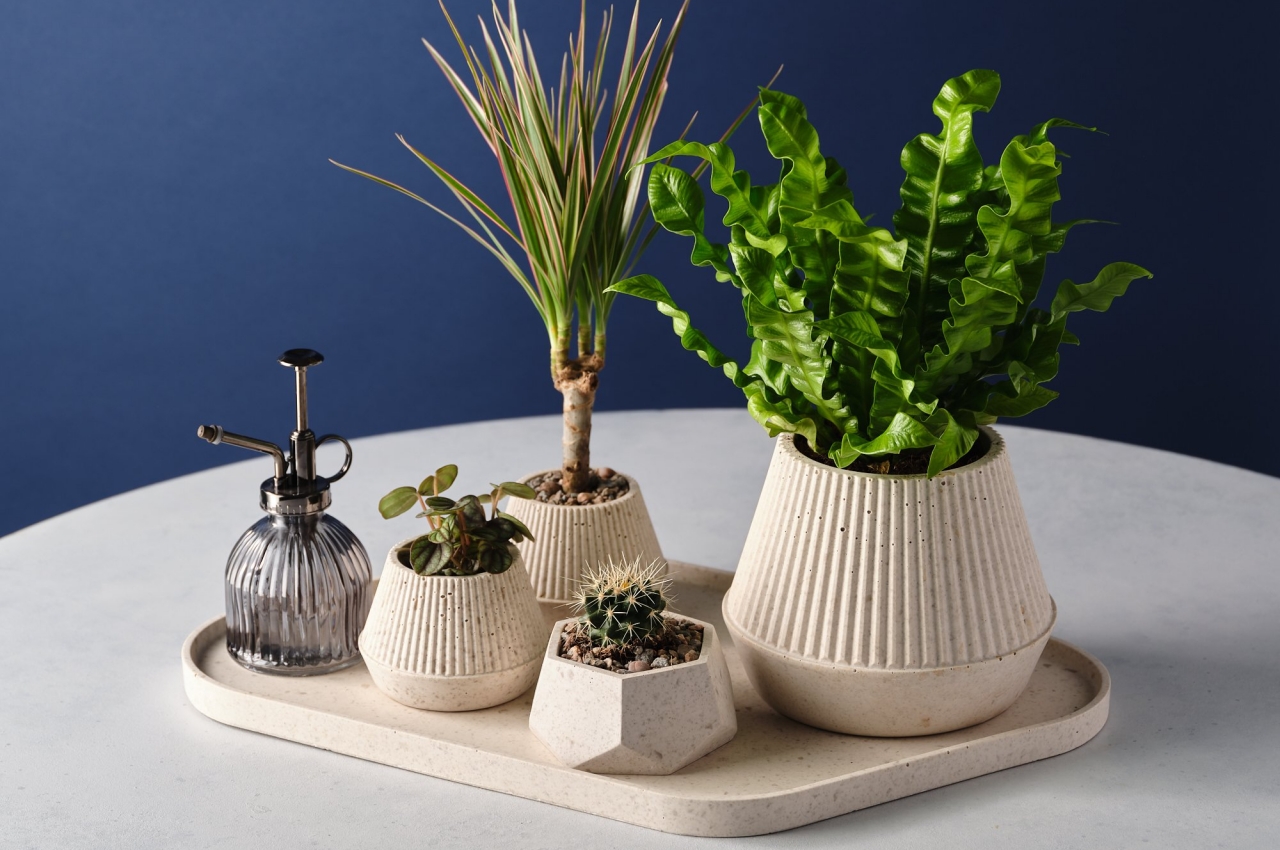
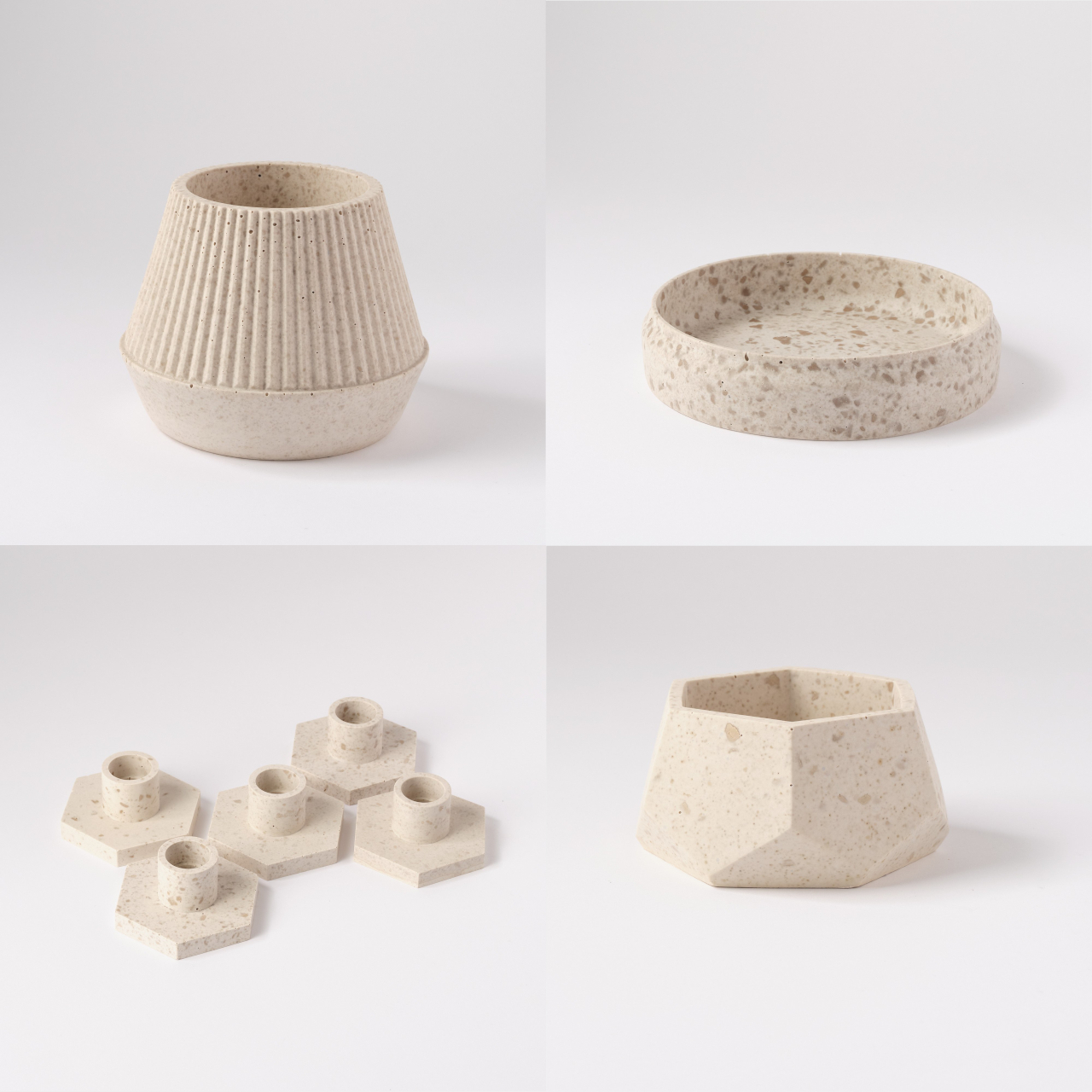
Designer: Sarah Christensen
Sarah Christensen utilizes Jesmonite, a popular eco-friendly alternative to resin-based products, along with spent coffee grounds to craft everyday homeware. These materials are combined to create solid objects resembling terrazzo, with each product consisting of 40% coffee grounds and 60% Jesmonite. Christensen’s focus on plant pots, candle holders, and soap dishes encourages indoor gardening and mindfulness while repurposing coffee waste. Additionally, she aims to integrate her homeware into the circular economy by utilizing broken pieces for other purposes, showcasing how coffee can continue to benefit the world beyond its primary function of energizing individuals.
7. Homeware
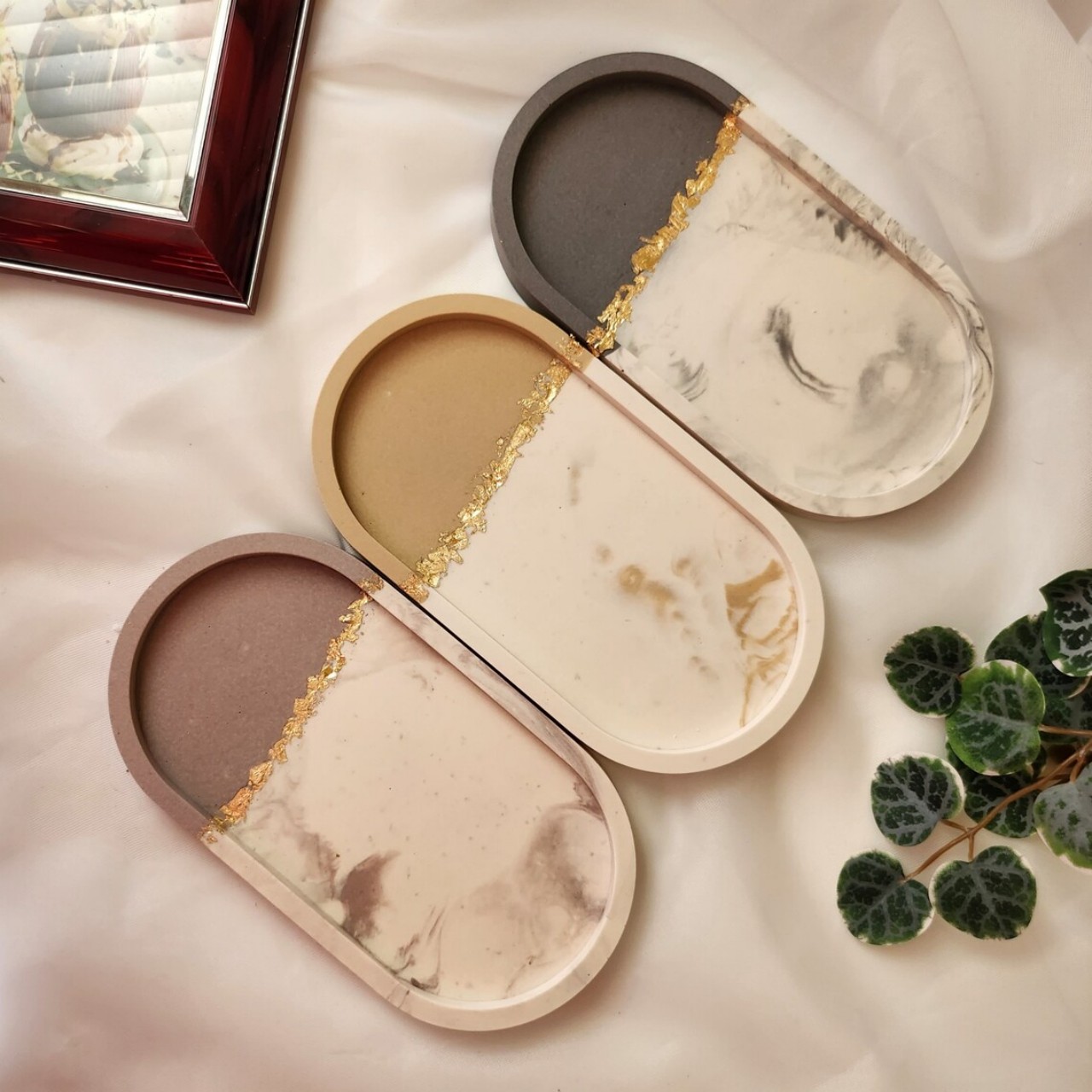
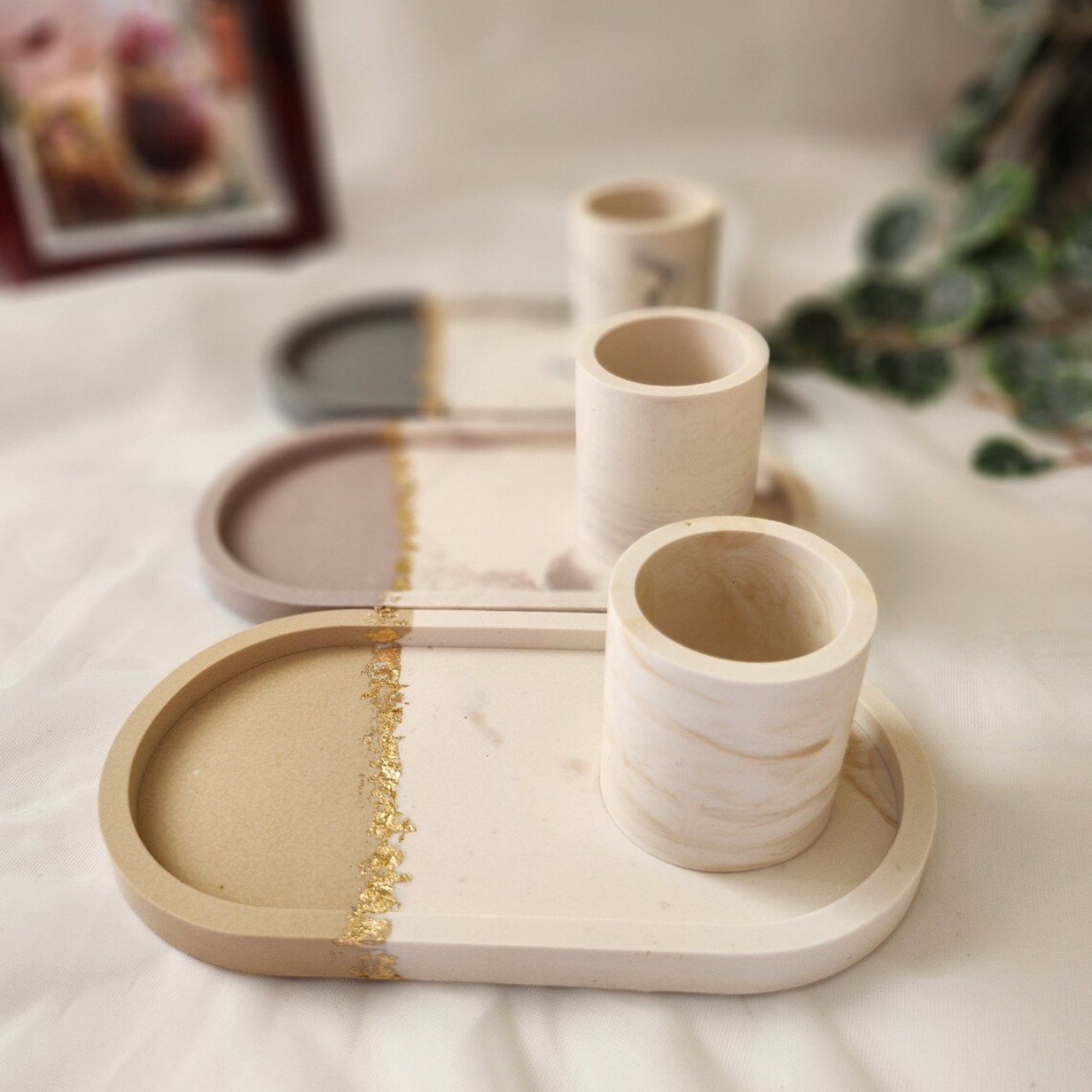
Designer: Grace
Jesmonite lends itself well to molding into diverse shapes, making it an excellent option for crafting various decor pieces such as trays, cups, jars, and other homeware items. These decorative jesmonite trays blend artistry with functionality. Jesmonite products, composed of a reactive mineral base and water-based acrylic resin, are non-solvent and free of VOCs, making them eco-friendly and versatile for various uses at home.
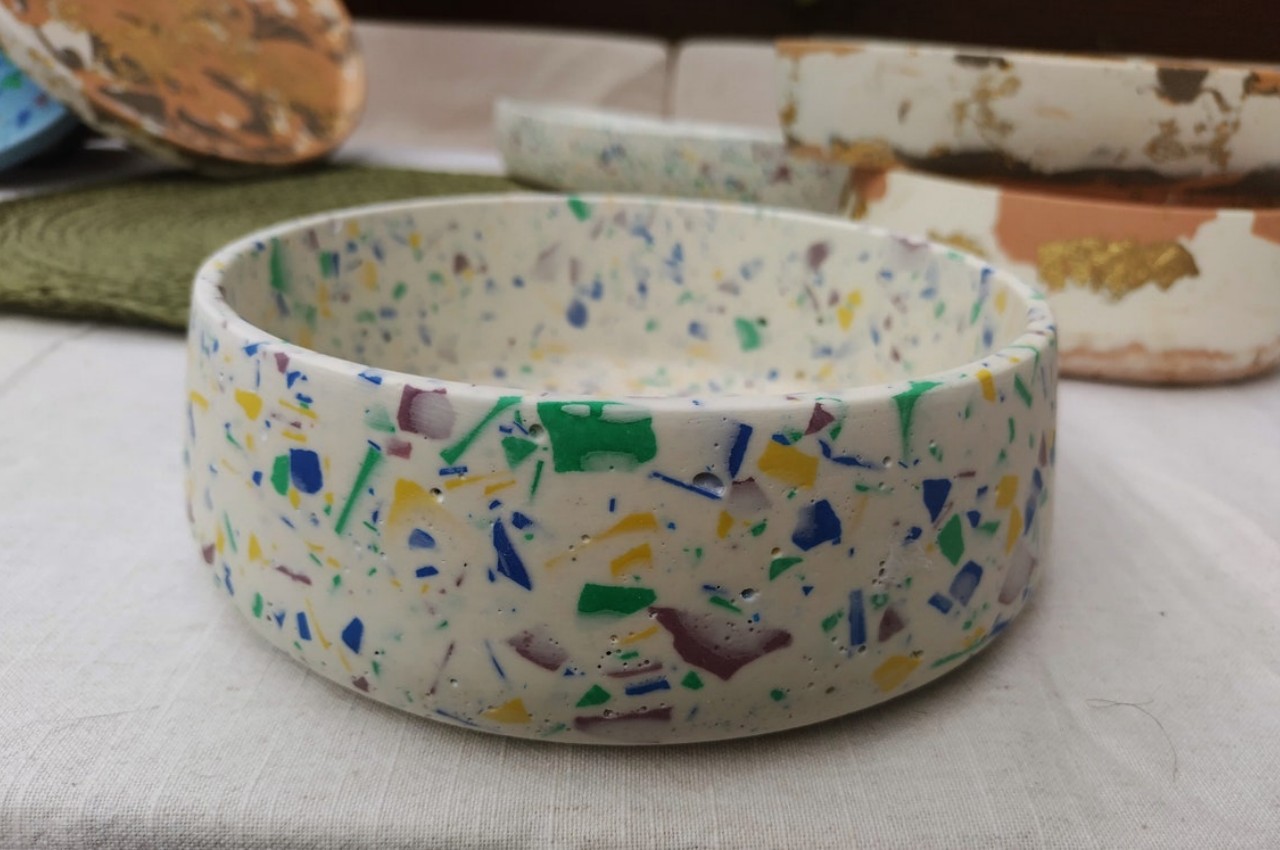
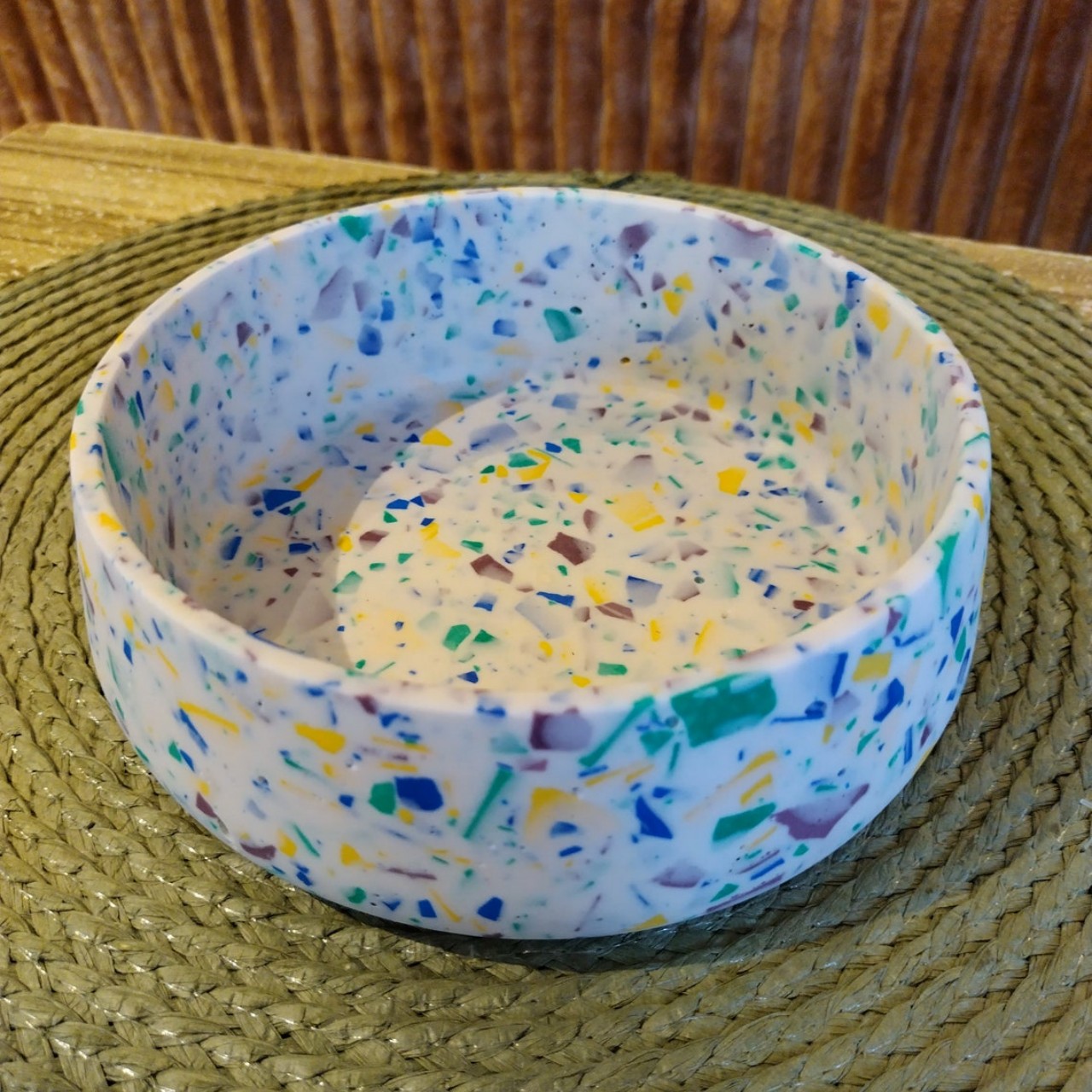
Designer: Marta
The one-of-a-kind multi-colored terrazzo-style bowl, crafted entirely by me using Eco resin and Jesmonite materials and pastel hues.
8. Wall Relief
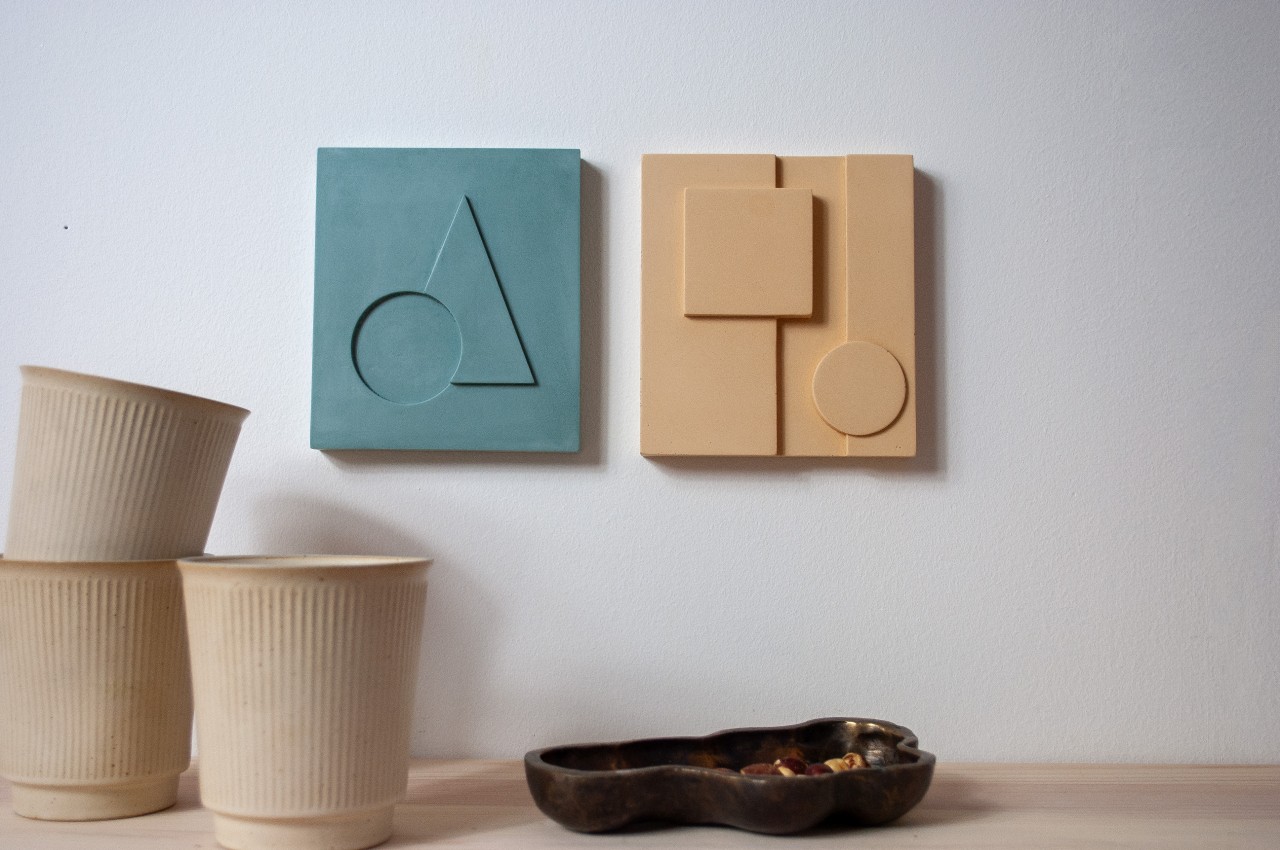
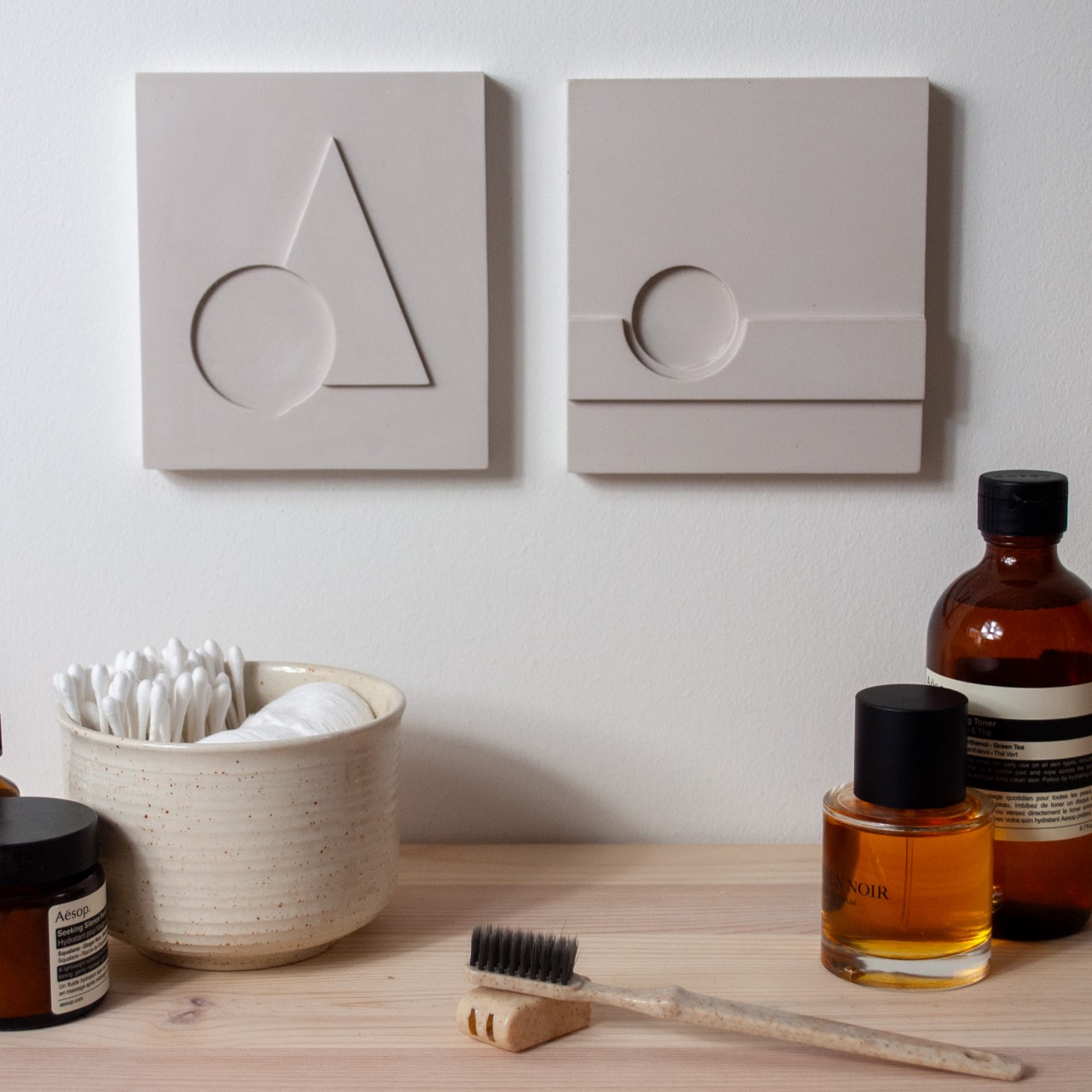
Designer: Theodóra Alfreðsdóttir
The ‘Wall Jesmonite Relief’ by Theodora Alfredsdottir is a captivating geometric artwork that seamlessly blends artistry, geometric shapes, and functionality, perfect for interior decor. Crafted from versatile jesmonite with a discreet keyhole for easy wall mounting, it looks stunning in various color options.
In conclusion, Jesmonite is highly versatile, durable, and lightweight, finding extensive use across construction, architecture, and art industries. Its ability to replicate natural materials, along with its strength and durability, makes it an ideal choice for diverse projects and design applications.
The post What is Jesmonite and Why is it Gaining Popularity in Contemporary Product Design? first appeared on Yanko Design.
0 Commentaires